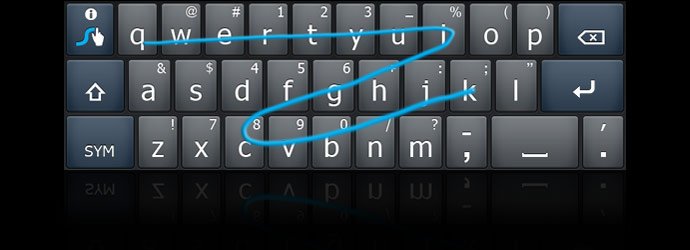By Chi Hung Luke Hsieh
Assistive Technology Advocate
I have recently—yes, only recently—gotten friendly with swype input. As someone who has the word “technology” in his job title, the shame and dishonor of such wilful neglect brought upon my person is incalculable. However, thanks to my new state-of-the-art Android phone, I have had the chance to turn this narrative of shame into a narrative of redemption, and nobody needs to commit hara-kiri! Oh, and in case you do not yet know what swype is—the words swipe and type combined—and it’s the input mode where your finger goes from B to E without stopping when typing the word “because”. You literally swipe your finger from B down to E without picking up your finger.
I first came across the trace typing technology at the annual CSUN International Technology & Persons with Disabilities Conference in 2011, but respectfully ignored it, because I figured that there’s nothing swype can do that typing with auto-correction and/or word-prediction can’t do faster. Strictly speaking, I wasn’t far off; for someone with minor motor skills impairment, I could swype no more accurately than I could type. If I was to use a stop watch I am sure that I can type as fast, if not faster, than swype. To my surprise, it only took less than a month of switching from iPhone 4S to Android Jelly Bean to turn me into a believer—to the extent that I started searching for a non-existent tablet-like flat keyboard for my Windows 7 based PC. I also started hating the QWERTY keyboards that have been my friend for the last 25 years. Oh, loyalty can be so fleeting.
Why do I adore swyping so much, if it’s not the speed? Well, here is the short version: dragging the finger all over a virtual keyboard uses less muscle than a traditional keyboard, especially for someone accustomed to typing with two fingers. And that’s it—that’s the reason I am willing to divorce my QWERTY keyboards. And, the quickest way Microsoft can convince me to purchase a Surface RT tablet, is to tell me that I can use it as a swyping keyboard for my desktop computer.
Right now, arguably the best third-party swype applications apart from the ‘trace typing’ offered by google keyboard are Swype from Nuance (based in Massachusetts) and Swiftkey by TouchType Ltd. (based in London), although all three keyboards are designed for use with the Android platform. The user experience for Swype and SwiftKey are almost identical: both make use of individualized word prediction, analyzes the user’s vocabulary patterns, and both have price tags of $3.99. So, the choice really comes down to individual preference. Personally—even though I have a soft spot for everything British—I chose Swype over SwiftKey because I needed the Asian Keyboards, and Touch Type’s is still in beta testing.
Now, how does one use trace typing on a Windows based Desktop PC? To the best of my knowledge, trace typing is not offered by Microsoft for Windows 7 or 8 based computers, nor can one purchase an integrated third party keyboard (physical or software) for this purpose, so the only way one can use Swype on Desktop PC is by using Chrome Remote Desktop. Chrome Remote Desktop is an free add-on from google for the Chrome Browser that allows one to remotely operate window based computers via Android Smartphones, and the technology is definitely not new. If you remember PCs anywhere from the late 1990s, such technology always suffered from either insufficient processing power or Internet speed, but neither problem exists in 2014, since my smartphone has as much processing power as my desktop computer at home. So, fortunately the speed bug of the 90s is unlikely to be much of an issue today.
A potential problem with this technology, though, is that it threatens to turn the world into a hacker’s paradise and is, therefore, a nightmare for IT professionals. Even I have concerns about the security implications of the technology and I am not usually the paranoid type.
But at least we now know that it can be done and it has been done, so the question for me now is how much of a security risk I am willing to take to use trace typing on my PC…
Here is a great video demonstration of SwiftKey Flow Hard:





